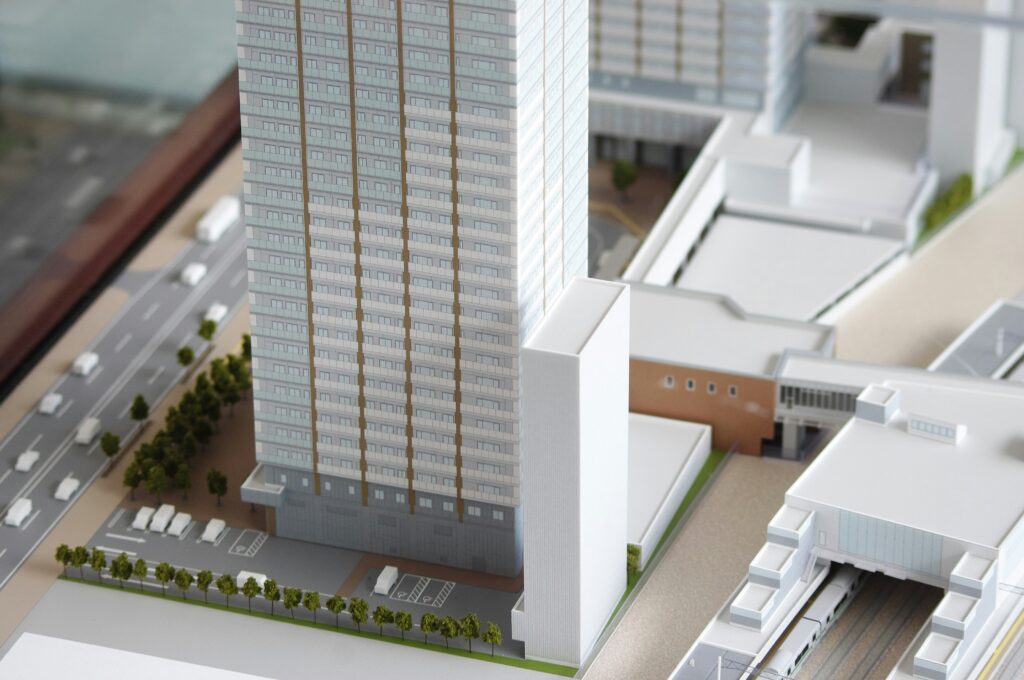
In a landscape defined by fluctuating market dynamics, the residential construction sector finds itself navigating choppy waters, with builder confidence encountering stagnation and construction activity exhibiting signs of waning momentum against the backdrop of an uncertain rate environment.
While March saw a modest uptick in builder confidence, April witnessed a plateau in sentiment, mirroring the broader trend of stability tinged with caution. Residential construction, which had experienced a surge in February, retraced its steps in March, reflecting a decline in momentum that reverberated across key indicators.
Data from the U.S. Census Bureau and the Department of Housing and Urban Development (HUD) paints a sobering picture, revealing a 14.7 percent decrease in construction starts from February’s levels. Single-family starts bore the brunt of this downturn, plunging by 12.4 percent, while multifamily starts witnessed an even steeper decline of 20.8 percent year-over-year.
Permits, another vital metric of construction activity, followed suit, registering a 4.3 percent decline in the annual rate compared to the previous month. Despite a marginal uptick in permits on an annual basis, single-family authorizations experienced a notable setback, signaling lingering apprehensions among builders amidst a shifting economic landscape.
Analysts, whose forecasts had painted a rosier picture, found their expectations outstripped by the stark reality of the market’s performance. The National Association of Home Builders (NAHB) underscored this sentiment, with the NAHB/Wells Fargo Housing Market Index (HMI) maintaining a flat trajectory, signaling a cautious outlook among industry stakeholders.
Robert Deitz, NAHB’s chief economist, echoed this sentiment, emphasizing the need for clarity in the face of evolving rate dynamics. The tug-of-war between buyer demand and market uncertainties has left stakeholders grappling with strategic decisions amid a landscape characterized by inflationary pressures and shifting monetary policies.
Despite the prevailing uncertainties, certain regions exhibited resilience, with the Northeast witnessing a marginal uptick in HMI scores and the West experiencing positive growth in construction activity. However, these bright spots were overshadowed by declines in other regions, underscoring the nuanced nature of the market’s performance.
Amidst these challenges, the construction sector grapples with the imperative of adapting to evolving market dynamics while navigating a terrain fraught with uncertainties. As stakeholders brace themselves for the road ahead, the resilience of the residential construction sector will be tested, with strategic foresight and adaptability emerging as indispensable assets in an environment defined by volatility and change.




a2g6i4
van3yd
hzhdps
Chatting with grannysex online is a incredible pursuit. Their insight and compassion turn each conversation enlightening.
Nos dialogues virtuelles avec des Sexe Bordeaux sont toujours passionnantes. Leur sophistication et leur séduction confèrent une touche unique à chaque conversation.
mexican rx online
https://cmqpharma.com/# mexican drugstore online
mexican border pharmacies shipping to usa
mexico drug stores pharmacies
https://cmqpharma.com/# mexico drug stores pharmacies
best online pharmacies in mexico
buying prescription drugs in mexico: cmq pharma – mexican pharmaceuticals online
mexico drug stores pharmacies: mexico pharmacy – medication from mexico pharmacy
mexican drugstore online: mexican pharmacy online – pharmacies in mexico that ship to usa
pharmacies in mexico that ship to usa
http://cmqpharma.com/# mexican mail order pharmacies
reputable mexican pharmacies online
Discuter en ligne avec des sexe lille est toujours une opportunité spéciale. Leur authenticité et leur chaleur éclairent chaque interaction.
mexico pharmacy: mexican pharmacy – medicine in mexico pharmacies
purple pharmacy mexico price list
https://cmqpharma.com/# mexican mail order pharmacies
mexico drug stores pharmacies
reputable mexican pharmacies online
http://cmqpharma.com/# best online pharmacies in mexico
mexican pharmaceuticals online
indian pharmacy online Online medicine home delivery reputable indian pharmacies
http://foruspharma.com/# mexican rx online
best mail order pharmacy canada: legitimate canadian pharmacies – best canadian pharmacy online
mexican pharmaceuticals online purple pharmacy mexico price list buying prescription drugs in mexico
best mail order pharmacy canada: canadian pharmacy world – reliable canadian online pharmacy
canadadrugpharmacy com: canadian online pharmacy – safe canadian pharmacy
top online pharmacy india: indian pharmacy online – indianpharmacy com
vipps canadian pharmacy best mail order pharmacy canada legal canadian pharmacy online
https://foruspharma.com/# mexico drug stores pharmacies
indianpharmacy com: online shopping pharmacy india – best india pharmacy
canadian pharmacy: canadian pharmacy com – best canadian online pharmacy
mexico pharmacy: buying from online mexican pharmacy – reputable mexican pharmacies online
https://indiapharmast.com/# indianpharmacy com
safe online pharmacies in canada canadian drug pharmacy canadian pharmacy world reviews
medication from mexico pharmacy: mexican pharmacy – mexico pharmacy
precription drugs from canada: canadian drug prices – canadian pharmacy prices
top online pharmacy india: indian pharmacy – online pharmacy india
п»їbest mexican online pharmacies pharmacies in mexico that ship to usa mexican online pharmacies prescription drugs
reputable mexican pharmacies online: medication from mexico pharmacy – mexican drugstore online
https://indiapharmast.com/# top 10 online pharmacy in india
canadian pharmacy 24: best rated canadian pharmacy – canadian pharmacy in canada
best online pharmacies in mexico: reputable mexican pharmacies online – mexican mail order pharmacies
mexican border pharmacies shipping to usa reputable mexican pharmacies online medication from mexico pharmacy
https://foruspharma.com/# mexican pharmaceuticals online
buy medicines online in india: online shopping pharmacy india – best india pharmacy
mexico drug stores pharmacies: mexican pharmaceuticals online – medicine in mexico pharmacies
canadian discount pharmacy: canadian pharmacy india – canadian pharmacy king
buying drugs from canada adderall canadian pharmacy canadian pharmacy online store
reputable indian online pharmacy: Online medicine home delivery – Online medicine home delivery
mexico pharmacy: pharmacies in mexico that ship to usa – purple pharmacy mexico price list
п»їlegitimate online pharmacies india: Online medicine home delivery – top online pharmacy india
online pharmacy india indianpharmacy com indian pharmacy paypal
online canadian drugstore: canadian pharmacy meds reviews – best canadian pharmacy online
https://foruspharma.com/# mexico drug stores pharmacies
canadian drugstore online: canadianpharmacy com – prescription drugs canada buy online
buying prescription drugs in mexico online: mexico drug stores pharmacies – pharmacies in mexico that ship to usa
http://amoxildelivery.pro/# amoxicillin without rx
buying cheap clomid without insurance: can you get cheap clomid without a prescription – clomid sale
https://clomiddelivery.pro/# cost of clomid now
http://amoxildelivery.pro/# amoxicillin 50 mg tablets
can i purchase amoxicillin online: buy amoxicillin over the counter uk – amoxicillin pharmacy price
cost generic clomid: cost clomid pills – where can i get generic clomid pills
http://ciprodelivery.pro/# buy cipro online without prescription
http://ciprodelivery.pro/# buy ciprofloxacin over the counter
amoxicillin 500mg price: where to buy amoxicillin over the counter – amoxicillin buy canada
https://paxloviddelivery.pro/# Paxlovid over the counter
https://amoxildelivery.pro/# amoxacillian without a percription
п»їpaxlovid: п»їpaxlovid – paxlovid pill
https://amoxildelivery.pro/# cost of amoxicillin prescription
https://ciprodelivery.pro/# cipro ciprofloxacin
п»їpaxlovid: paxlovid covid – paxlovid generic
https://clomiddelivery.pro/# can i get cheap clomid no prescription
doxycycline over the counter singapore: buy doxycycline 100mg capsule – azithromycin doxycycline
http://amoxildelivery.pro/# antibiotic amoxicillin
http://paxloviddelivery.pro/# paxlovid buy
http://ciprodelivery.pro/# antibiotics cipro
where to buy amoxicillin 500mg without prescription: buy amoxicillin 500mg usa – amoxicillin without prescription
amoxil generic: buy amoxicillin 250mg – generic amoxicillin online
https://amoxildelivery.pro/# amoxicillin buy online canada
https://ciprodelivery.pro/# buy cipro online
ciprofloxacin 500 mg tablet price: cipro online no prescription in the usa – buy cipro online without prescription
https://amoxildelivery.pro/# generic for amoxicillin
https://doxycyclinedelivery.pro/# buy doxycycline monohydrate
paxlovid covid: paxlovid india – paxlovid pill
amoxicillin 500 mg tablet: over the counter amoxicillin – amoxicillin no prescipion
doxycycline india cost: order doxycycline without prescription – doxycycline buy
buy cipro online usa: cipro online no prescription in the usa – ciprofloxacin mail online
how can i get clomid for sale: how to buy cheap clomid without prescription – order generic clomid without insurance